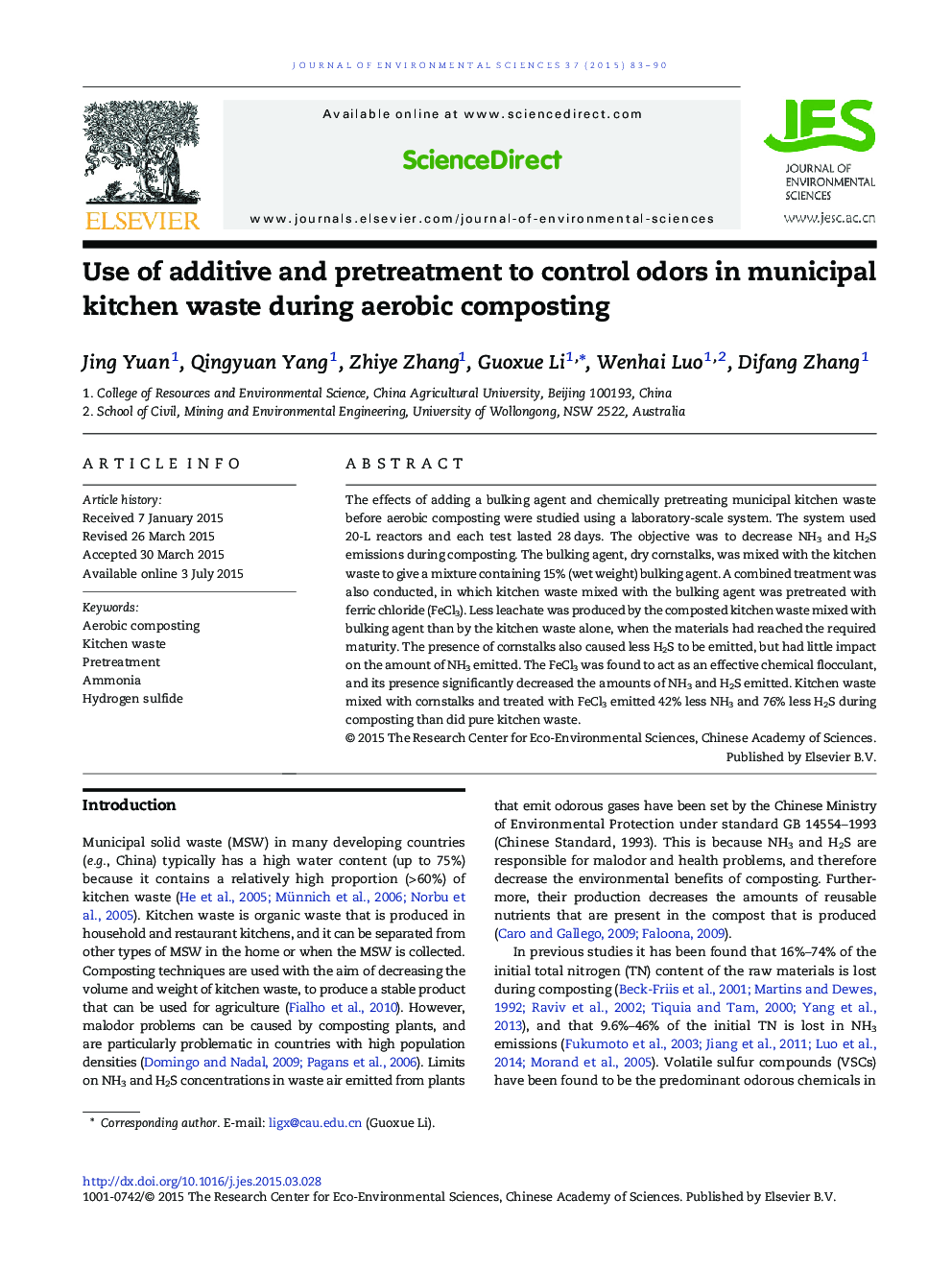| Article ID | Journal | Published Year | Pages | File Type |
|---|---|---|---|---|
| 4453909 | Journal of Environmental Sciences | 2015 | 8 Pages |
The effects of adding a bulking agent and chemically pretreating municipal kitchen waste before aerobic composting were studied using a laboratory-scale system. The system used 20-L reactors and each test lasted 28 days. The objective was to decrease NH3 and H2S emissions during composting. The bulking agent, dry cornstalks, was mixed with the kitchen waste to give a mixture containing 15% (wet weight) bulking agent. A combined treatment was also conducted, in which kitchen waste mixed with the bulking agent was pretreated with ferric chloride (FeCl3). Less leachate was produced by the composted kitchen waste mixed with bulking agent than by the kitchen waste alone, when the materials had reached the required maturity. The presence of cornstalks also caused less H2S to be emitted, but had little impact on the amount of NH3 emitted. The FeCl3 was found to act as an effective chemical flocculant, and its presence significantly decreased the amounts of NH3 and H2S emitted. Kitchen waste mixed with cornstalks and treated with FeCl3 emitted 42% less NH3 and 76% less H2S during composting than did pure kitchen waste.
Graphical abstractComposting is an appropriate waste management alternative. However, malodor problems can be caused by composting plants; NH3 and H2S are responsible for malodor and health problems. Kitchen waste mixed with cornstalks and treated with FeCl3 emitted 42% less NH3 and 76% less H2S during composting than did pure kitchen waste.Figure optionsDownload full-size imageDownload as PowerPoint slide
